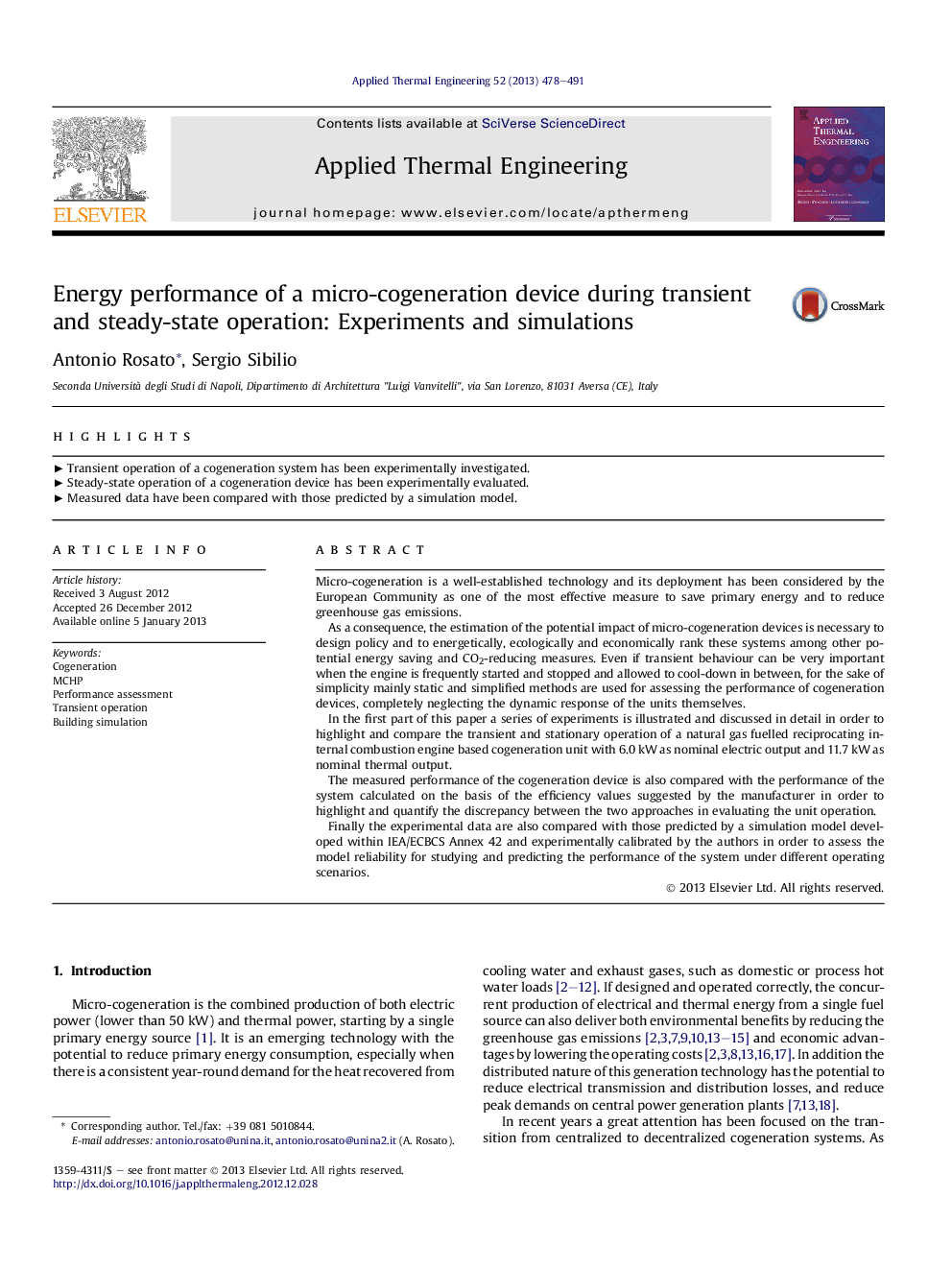| Article ID | Journal | Published Year | Pages | File Type |
|---|---|---|---|---|
| 646998 | Applied Thermal Engineering | 2013 | 14 Pages |
Micro-cogeneration is a well-established technology and its deployment has been considered by the European Community as one of the most effective measure to save primary energy and to reduce greenhouse gas emissions.As a consequence, the estimation of the potential impact of micro-cogeneration devices is necessary to design policy and to energetically, ecologically and economically rank these systems among other potential energy saving and CO2-reducing measures. Even if transient behaviour can be very important when the engine is frequently started and stopped and allowed to cool-down in between, for the sake of simplicity mainly static and simplified methods are used for assessing the performance of cogeneration devices, completely neglecting the dynamic response of the units themselves.In the first part of this paper a series of experiments is illustrated and discussed in detail in order to highlight and compare the transient and stationary operation of a natural gas fuelled reciprocating internal combustion engine based cogeneration unit with 6.0 kW as nominal electric output and 11.7 kW as nominal thermal output.The measured performance of the cogeneration device is also compared with the performance of the system calculated on the basis of the efficiency values suggested by the manufacturer in order to highlight and quantify the discrepancy between the two approaches in evaluating the unit operation.Finally the experimental data are also compared with those predicted by a simulation model developed within IEA/ECBCS Annex 42 and experimentally calibrated by the authors in order to assess the model reliability for studying and predicting the performance of the system under different operating scenarios.
► Transient operation of a cogeneration system has been experimentally investigated. ► Steady-state operation of a cogeneration device has been experimentally evaluated. ► Measured data have been compared with those predicted by a simulation model.
